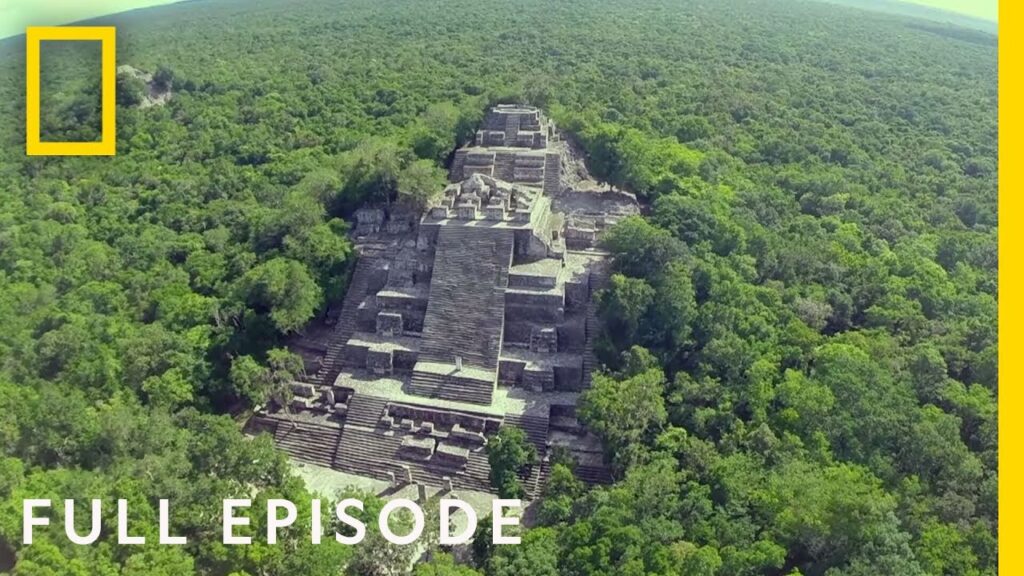Exploring Jaina: Mexico’s Hidden Gem
Nestled in the heart of the Yucatan Peninsula, Jaina serves as a bastion of Mayan history and an untouched reserve of natural beauty. This relatively unknown site offers a unique opportunity for travelers seeking an adventure off the beaten path. Not to be confused with more prominent destinations like Chichen Itza, Jaina is an enchanting island that promises a much more intimate experience with the past.
Historically, Jaina was a ceremonial center and burial site for the Maya elite. The island is scattered with small temple ruins and over 1,000 graves, which have provided archaeologists with invaluable insights into the Mayan way of life. To explore these ancient wonders is to walk in the footsteps of the priests and nobles who lived over a thousand years ago.
For nature enthusiasts, Jaina is also a wildlife sanctuary. The surrounding mangroves and turquoise waters are teeming with a diverse array of bird species and marine life. Visitors can enjoy bird watching or simply bask in the serenity of the island’s untouched landscapes. The peaceful surroundings provide a stark contrast to the bustling tourist spots found elsewhere in Mexico.
Access to Jaina is an adventure in itself, typically requiring a boat trip from the nearby coastal town of Campeche. This journey across the calm waters of the Gulf of Mexico is not only a prelude to the exploration of the island but also an opportunity to disconnect from the modern world and prepare oneself for a truly transformative experience. The isolation of Jaina is precisely what has allowed it to preserve its mystical allure and remain an alluring destination for those in search of Mexico’s hidden gems.
The Mysteries of Jaina: A Glimpse into Maya Civilization
Located on the remote island of Jaina, off the coast of Campeche, Mexico, lie the remnants of an ancient Maya civilization that continues to fascinate historians and travelers alike. The island served as an elite burial site, housing a range of strangely life-like clay figurines, intricately detailed and positioned as if they were once animated participants in a vibrant society. These terracotta sculptures offer enigmatic snapshots of the daily lives, occupations, and even fashion of the Mayas from centuries ago, showcasing everything from the casual pose of a ballplayer to the stately demeanor of Maya nobility.
Dubbed as the «Island of the Dead,» Jaina’s mystique is heightened by the elaborate tombs and ceremonial platforms found throughout the island. Supposedly a place where the soul journeyed after death, Jaina reflects the Maya belief in an afterlife and their reverence for ancestors. The island’s name itself, which translates to «house of water,» is a nod to the Maya’s deep spiritual connection with cenotes and other natural water sources, believed to be gateways to the otherworld.
The challenge of understanding Jaina goes beyond admiring its artistry; archaeologists are piecing together clues to gain insight into its purpose within the wider Maya civilization. Why did this isolated island become such a significant necropolis? Was it the serene environment, its proximity to trade routes, or perhaps a manifestation of political power? These questions haunt every corner of Jaina, an ancient puzzle amidst the mangroves, silently whispering secrets of the vanished Maya society.
Jaina Archaeological Island: An Adventure Awaits
Located off the coast of Campeche in the Yucatan Peninsula, Jaina Island stands as a silent guardian of Maya civilization’s past glories. Famous for its collection of nearly 1,000 graves and the accompanying terracotta figurines, the island offers a unique glimpse into the rituals and beliefs of the ancient Mayan people. Unmatched in its serenity and mystique, Jaina—meaning «house of water»—serves as an enchanting destination for both history buffs and adventure seekers alike.
Its journey through time begins in the Late Classic Period of Maya history, around.AD 600 to 900. The island served as an elite cemetery, and the artifacts unearthed here suggest it was a crucial ceremonial site. Visitors can wind through the remnants of the necropolis and feel the history underfoot. Each step is a step back in time, a tangible connection to the ceremonies and funerary practices that were once performed with great reverence on this secluded island.
The enchantment of Jaina extends beyond its rich history. The island is also a haven for wildlife, with diverse bird species flitting amongst the trees that grow over the ancient ruins. Nature and history intertwine here, making Jaina not just a site of archaeological interest, but also a sanctuary where one can appreciate the enduring beauty of both man’s legacy and nature’s resilience.
For the adventurous at heart, the journey to Jaina represents an off-the-beaten-path expedition. Access to the island is typically by boat, with the trip itself offering spectacular views and a sense of isolation that is both humbling and exhilarating. This seclusion is part of what makes Jaina so special; it stands apart from the more frequented tourist destinations, promising an experience that is both intimate and profound.
As you plan your visit, it is essential to respect and protect the delicate ecosystem and priceless cultural treasures of Jaina. The archaeological site, while open to the public, is a place of cultural significance and should be treated with the utmost care. Guided tours can enhance the experience, providing insights into the island’s fascinating history while ensuring that its integrity is maintained for generations to come.
Rediscovering Jaina: How the Maya Train Unveils the Past
The much-anticipated Maya Train project is set to revolutionize travel within the Yucatán Peninsula, offering not just a sustainable transportation option but a unique window into the region’s deeply rooted history. One such hidden gem that has been brought back into the limelight is Jaina, an island celebrated for its ancient Mayan heritage. With easier access courtesy of the Maya Train, adventurers and historians alike can look forward to a hassle-free journey back in time.
Jaina, once a significant Mayan burial site, is nestled discreetly at the edge of the Mexican state of Campeche. The arrival of the Maya Train promises to elevate its status from a mere whisper in archaeological circles to a chorus in the mainstream tourism industry. What awaits visitors is an intimate encounter with the past, featuring the famed ceramic figurines that have silently guarded the spirit of Maya culture throughout the centuries.
As visitors venture into Jaina, they are not simply stepping onto an island; they are crossing a threshold into another era. The meticulously detailed crafts found on the island serve as emotive storytellers, illustrating daily life, religious practices, and the social hierarchy that once defined the now long-gone Mayan populace. Remarkably preserved, these artifacts offer a tangible connection to the mysterious ancient civilization that once thrived on this very island.
The Maya Train is more than just a transportation system; it is an ambassador for cultural immersion. Through this modern marvel of connectivity, Jaina’s treasures will be seen and appreciated by a broader audience, fostering a greater understanding of Mayan traditions and their enduring impact on contemporary culture. Visitors embarking on this journey will not just be observing history but experiencing the resurgence of Mayan pride and wisdom that has been quietly awaiting its chance to be reawakened.
Moreover, the integration of Jaina into the route of the Maya Train speaks volumes about the potential for sustainable tourism. This newfound ease of access is balanced with a profound respect for the island’s archaeological significance, ensuring that while the secrets of the past are unveiled, they are also conscientiously preserved. As we rediscover Jaina through the windows of the Maya Train, we are reminded of the harmonious coexistence that can be achieved between progress, preservation, and the deliverance of history’s lessons into our modern world.
Jaina’s Secrets: What the Maya Train Section 2 Reveals
The excitement surrounding the Maya Train’s Section 2 is palpable among the travelers eagerly awaiting the unveiling of Mexico’s rich tapestry of history and culture. As this section meanders through the Yucatan Peninsula’s diverse landscapes, it promises to unlock the gates to Jaina Island’s ancient secrets. This small limestone island, once an elite Maya burial site, is poised to become an accessible treasure with the train’s completion, inviting adventurers and history enthusiasts alike to witness first-hand the remnants of the great Maya civilization.
Archaeologists and historians have long been fascinated by Jaina’s unique funerary traditions, where figures of the Mesoamerican ballgame players, jade and shellcarvings were laid beside the honored dead. These mysterious traditions give us a vivid snapshot into the spiritual beliefs and daily life of the Maya. With Section 2 of the Maya Train offering facilitated access, the opportunity to explore Jaina’s intricate past is vastly expanded. Visitors will soon be able to tread on the same ground where Maya rituals once took place, providing an immersive experience that bridges past and present.
Moreover, the new section promises a sustainable approach to archeo-tourism, bringing eager travelers to Jaina’s shores while ensuring the protection of its delicate ecosystem and priceless artifacts. It is not just about witnessing history, but actively preserving it for future generations. The Maya Train Section 2 aligns with this vision, aiming to create an equilibrium between the advancement of modern infrastructure and the conservation of Jaina’s ancient wonders, revealing to the world the intricate layers of Maya history that have been shrouded in enigma for centuries.



